One woman revolutionized the world of fiber by developing eco-friendly cottons that don't need dyes and can be spun by conventional mills.

In the world of fiber, there is a name so legendary that I have sometimes heard it whispered in reverence: Sally Fox. A colleague of mine used it recently as an exclamation point to a discussion on cotton growing: “Sally Fox!” she declared, snapping her notebook shut. Linda, from Northern Bay Handspun wrote me to say,“I think Sally Fox is a hero. I am so grateful for the years she spent working to give us something that we can feel so good about wearing next to our skin.” So who is this woman who inspires so much interest and devotion?
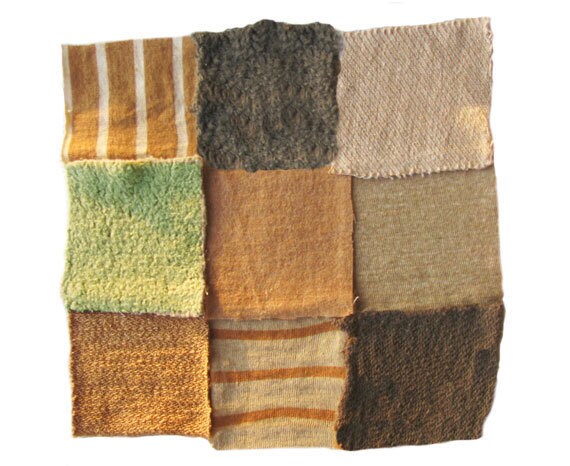 A%20few%20samples%20of%20Sally%E2%80%99s%20organic%20grown-in%20color%20cotton%20fabric%2C%20woven%20commercially%20in%20the%20US%20in%20the%201990s.%3Cp%3EKaren%20Brown%3C%2Fp%3E
A%20few%20samples%20of%20Sally%E2%80%99s%20organic%20grown-in%20color%20cotton%20fabric%2C%20woven%20commercially%20in%20the%20US%20in%20the%201990s.%3Cp%3EKaren%20Brown%3C%2Fp%3ESally Fox introduced naturally colored cotton to the world in 1989. She didn’t invent it – it has existed in nature for eons – but Sally did what no one thought was possible: she carefully hand-bred ancient, naturally pest-resistant varieties into long staple cottons that can be spun by conventional mills. And she did it using organic and biodynamic growing methods.
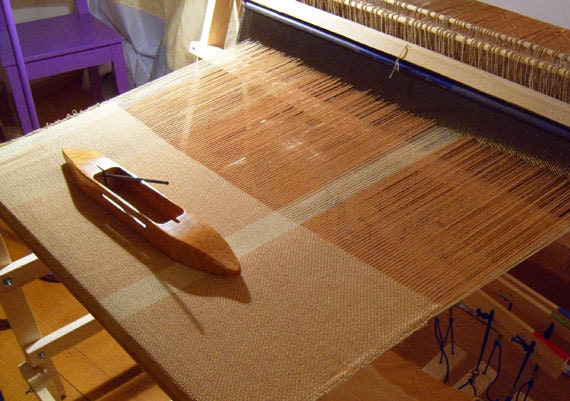 Sally%E2%80%99s%20cotton%20on%20a%20hand%20loom.%3Cp%3E%3Cspan%20style%3D%22color%3A%20%23333333%3B%20font-family%3A%20Georgia%2C%20'Bitstream%20Charter'%2C%20serif%3B%20font-size%3A%2014px%3B%20line-height%3A%2022px%3B%22%3E%3Ca%20href%3D%22http%3A%2F%2Factionweaver.com%22%20target%3D%22_blank%22%3ETravis%20Meinolf%3C%2Fa%3E%20%26nbsp%3B%3C%2Fspan%3E%3C%2Fp%3E
Sally%E2%80%99s%20cotton%20on%20a%20hand%20loom.%3Cp%3E%3Cspan%20style%3D%22color%3A%20%23333333%3B%20font-family%3A%20Georgia%2C%20'Bitstream%20Charter'%2C%20serif%3B%20font-size%3A%2014px%3B%20line-height%3A%2022px%3B%22%3E%3Ca%20href%3D%22http%3A%2F%2Factionweaver.com%22%20target%3D%22_blank%22%3ETravis%20Meinolf%3C%2Fa%3E%20%26nbsp%3B%3C%2Fspan%3E%3C%2Fp%3EWhen Sally was working her way through college – teaching, spinning, and handweaving – she heard a story at the Southern California Handweavers’ Guild that changed her life. “I heard about a local high school crafts teacher who was really into synthetic dyes,” Sally said. “She never took any precautions, never wore gloves, never did anything to protect herself from chemicals. She wound up in a convalescent home with brain damage, apparently from absorbing so much of the stuff through her skin. I couldn’t believe it! I did research, and discovered that a lot of the same companies who make pesticides also make dyes. From that moment forward I decided I wanted nothing to do with dyes. I started seeking out natural colors for all fibers.”
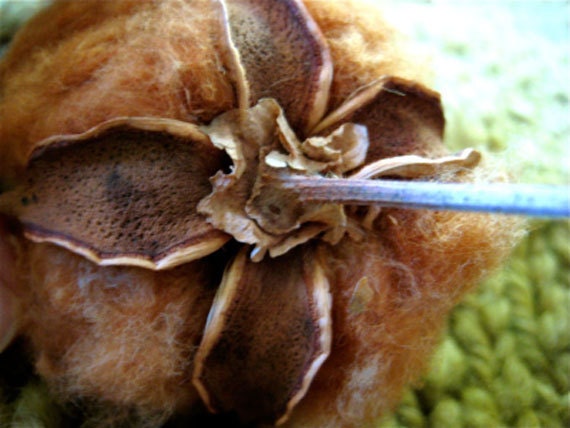 A%20naturally%20colored%20cotton%20boll.%20%3Cp%3E%3Ca%20href%3D%22http%3A%2F%2Fwww.paigegreenphotography.com%22%20target%3D%22_self%22%3EPaige%20Green%3C%2Fa%3E%26nbsp%3B%3C%2Fp%3E
A%20naturally%20colored%20cotton%20boll.%20%3Cp%3E%3Ca%20href%3D%22http%3A%2F%2Fwww.paigegreenphotography.com%22%20target%3D%22_self%22%3EPaige%20Green%3C%2Fa%3E%26nbsp%3B%3C%2Fp%3EThe unhealthy effects of chemical dyes have been noted by the World Bank, who estimates that almost 20 percent of industrial water pollution comes from textile dyeing and treatment. They have also identified 72 toxic chemicals in our water solely related to textile dyeing. “Later, I worked for a cotton breeder for a summer,” Sally continued. “He had all white cotton and the breeding was very boring. But he had a bag of short staple brown cotton, just a bunch of brown cotton full of seeds. It was the first time I had ever seen colored cotton and I fell in love with it. He said there was no market for it. But I was in my twenties, so I said, ‘Why don’t we make a market for it?’ He said to go for it and I did. I went through all those seeds and hand-spun the cotton connected to every single one. I decided which ones were the easiest ones to spin and I planted those. That was the beginning.”
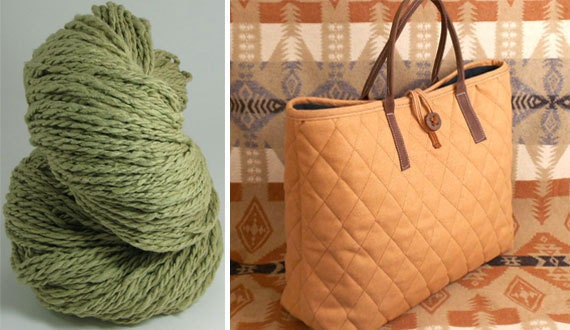 Items%20made%20with%20Sally%E2%80%99s%20cotton%3A%20Handspun%20yarn%20from%20Northern%20Bay%20Handspun%3B%20a%20quilted%20tote%20from%202NFrom.%3Cp%3ELeft%3A%26nbsp%3B%3Ca%20href%3D%22http%3A%2F%2Fwww.etsy.com%2Fshop%2Fnorthernbayhandspun%22%20target%3D%22_self%22%3ENorthern%20Bay%20Handspun%3C%2Fa%3E%3B%20right%3A%26nbsp%3B%3Ca%20href%3D%22http%3A%2F%2Fwww.etsy.com%2Fshop%2F2NFrom%22%20target%3D%22_self%22%3E2NFrom%3C%2Fa%3E.%3C%2Fp%3E
Items%20made%20with%20Sally%E2%80%99s%20cotton%3A%20Handspun%20yarn%20from%20Northern%20Bay%20Handspun%3B%20a%20quilted%20tote%20from%202NFrom.%3Cp%3ELeft%3A%26nbsp%3B%3Ca%20href%3D%22http%3A%2F%2Fwww.etsy.com%2Fshop%2Fnorthernbayhandspun%22%20target%3D%22_self%22%3ENorthern%20Bay%20Handspun%3C%2Fa%3E%3B%20right%3A%26nbsp%3B%3Ca%20href%3D%22http%3A%2F%2Fwww.etsy.com%2Fshop%2F2NFrom%22%20target%3D%22_self%22%3E2NFrom%3C%2Fa%3E.%3C%2Fp%3ESeason after season, Sally carefully bred colored cotton – eventually under the trademarks FoxFibre and Colorganic – in shades ranging from camel to tobacco to dusky green. She cross-bred it with long staple cotton to develop fibers that could be spun by conventional mills. Although the difference in length might seem slight – “short staple” cotton can be up to 1.15 inches long; “long staple” starts at 1.25” – it was a strategic difference that produced colored cotton with the potential to go mainstream. She also discovered that the tannins in colored cotton made it more pest, mildew, and fire resistant, so much so that a bale properly stored can last up to 100 years.
 A%20vest%20made%20from%20Sally%E2%80%99s%20Buffalo%20Brown%20and%20Palo%20Alto%20Green%20yarn.%3Cp%3E%3Cspan%20style%3D%22color%3A%20%23333333%3B%20font-family%3A%20Georgia%2C%20'Bitstream%20Charter'%2C%20serif%3B%20font-size%3A%2014px%3B%20line-height%3A%2022px%3B%22%3E%3Ca%20href%3D%22http%3A%2F%2Fwww.paigegreenphotography.com%22%20target%3D%22_blank%22%3EPaige%20Green%3C%2Fa%3E%3C%2Fspan%3E%3C%2Fp%3E
A%20vest%20made%20from%20Sally%E2%80%99s%20Buffalo%20Brown%20and%20Palo%20Alto%20Green%20yarn.%3Cp%3E%3Cspan%20style%3D%22color%3A%20%23333333%3B%20font-family%3A%20Georgia%2C%20'Bitstream%20Charter'%2C%20serif%3B%20font-size%3A%2014px%3B%20line-height%3A%2022px%3B%22%3E%3Ca%20href%3D%22http%3A%2F%2Fwww.paigegreenphotography.com%22%20target%3D%22_blank%22%3EPaige%20Green%3C%2Fa%3E%3C%2Fspan%3E%3C%2Fp%3EAlong with grown-in color, Sally began investigating healthier, more sustainable methods of growing. Conventional cotton is the most toxic crop in the world. Although it only occupies 3% of the world’s farmland, it consumes more than 25% of the insecticides and 12% of the pesticides used worldwide. (Insecticides are used to kill insects; pesticides are used to kill insects and other creatures, including birds, mammals, mollusks, and microorganisms.) In the US, 25% of the all pesticides used domestically are applied to cotton. For Sally, whose love of insects fueled her pursuit of a degree in entomology, using poison to kill insects was never an option.
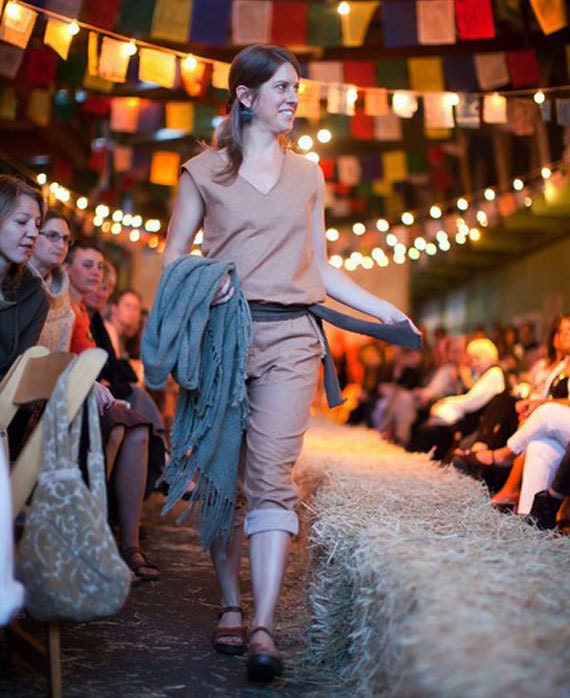 A%202011%20benefit%20fashion%20show%20included%20a%20jumpsuit%20and%20shawl%20made%20with%20Sally%E2%80%99s%20cotton.%20Boiling%20the%20green%20cotton%20for%20the%20shawl%20darkened%20it%20to%20a%20more%20intense%20shade.%3Cp%3E%3Cspan%20style%3D%22color%3A%20%23333333%3B%20font-family%3A%20Georgia%2C%20'Bitstream%20Charter'%2C%20serif%3B%20font-size%3A%2014px%3B%20line-height%3A%2022px%3B%22%3E%3Ca%20href%3D%22http%3A%2F%2Fwww.paigegreenphotography.com%2F%22%20target%3D%22_blank%22%3EPaige%20Green%3C%2Fa%3E%3C%2Fspan%3E%3C%2Fp%3E
A%202011%20benefit%20fashion%20show%20included%20a%20jumpsuit%20and%20shawl%20made%20with%20Sally%E2%80%99s%20cotton.%20Boiling%20the%20green%20cotton%20for%20the%20shawl%20darkened%20it%20to%20a%20more%20intense%20shade.%3Cp%3E%3Cspan%20style%3D%22color%3A%20%23333333%3B%20font-family%3A%20Georgia%2C%20'Bitstream%20Charter'%2C%20serif%3B%20font-size%3A%2014px%3B%20line-height%3A%2022px%3B%22%3E%3Ca%20href%3D%22http%3A%2F%2Fwww.paigegreenphotography.com%2F%22%20target%3D%22_blank%22%3EPaige%20Green%3C%2Fa%3E%3C%2Fspan%3E%3C%2Fp%3EAt one point, Sally ran a $10 million dollar business in naturally colored organic cotton, all grown, spun, and woven in the US. Then mill closures, outsourcing of the textile industry, and resistance from growers who worried that her pollen might drift into their white cotton fields challenged the structure of her business.
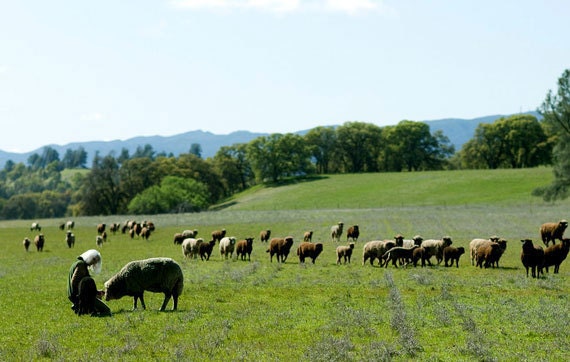 %3Cp%3E%3Ca%20href%3D%22http%3A%2F%2Fwww.paigegreenphotography.com%2F%22%20target%3D%22_self%22%3EPaige%20Green%3C%2Fa%3E%3C%2Fp%3E
%3Cp%3E%3Ca%20href%3D%22http%3A%2F%2Fwww.paigegreenphotography.com%2F%22%20target%3D%22_self%22%3EPaige%20Green%3C%2Fa%3E%3C%2Fp%3EIt took a while, but she is emerging from what she calls “hibernation.” “Now, I work with one mill in Japan and I have a US spinner for my cotton again,” she said from her biodynamic ranch in California’s Capay Valley, where she talked to me while bottle-feeding lambs from her multi-colored merino sheep. “What I am best at is R and D. I really know how to grow, and I really know how to design yarn and fabric. I am very excited about working with communities both inside and outside our local fibershed.” “The best part is seeing someone get enjoyment out of what you grow,” she said. "It’s so exciting to see what someone talented does with your material.”



